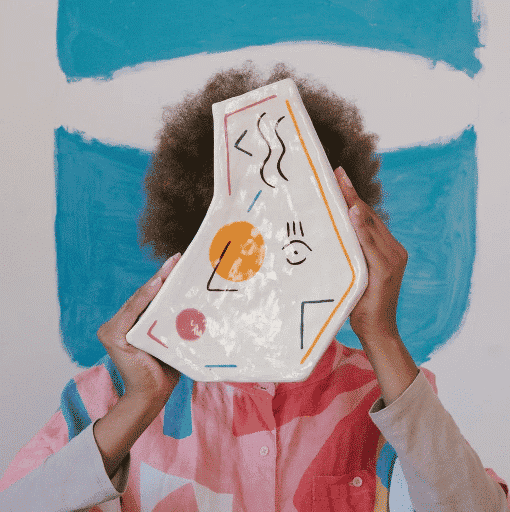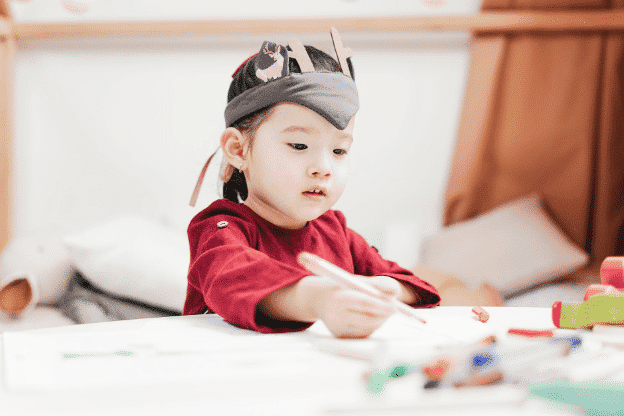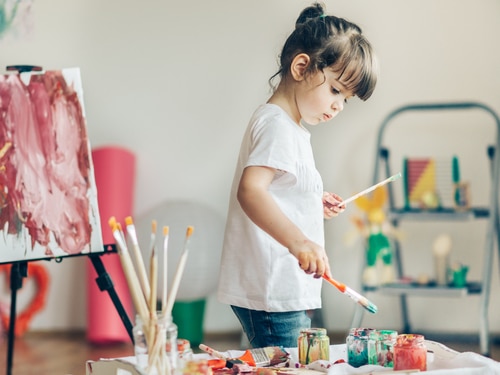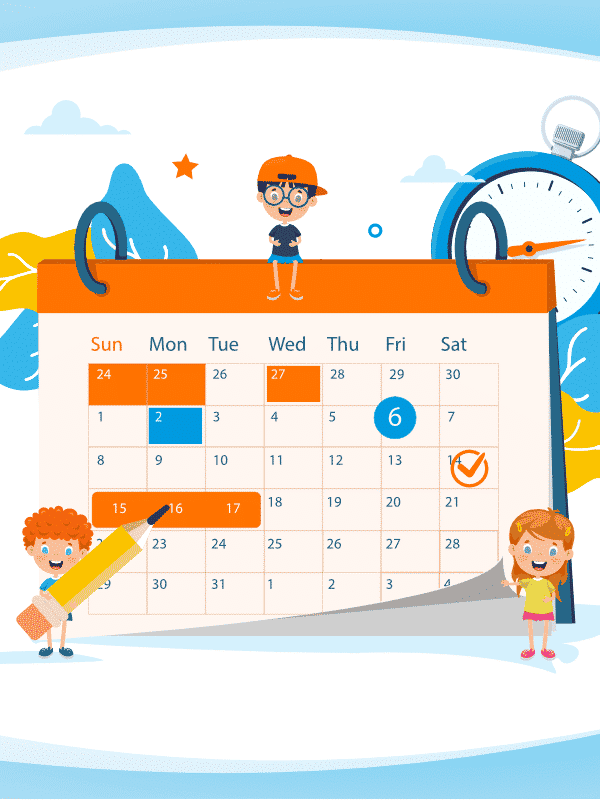In a language tutor’s toolbox, there are a myriad of resources that are used with the intention of encouraging and educating the student. In a typical TruFluency Kids Spanish Immersion class, our professional teachers will employ all sorts of entertaining tools ranging from dance-along music to colorful matching games. Beyond these, one of the absolute best tools for teaching a language is art!
More than a cheerful activity, art is an educational device that is both effective and accessible. Grab a paper and pencil and you’ve got a studio! Art can be made and described in all sorts of ways and gives your young learner another lens through which to view the Spanish language.
How Art Enhances the Language Learning Process
Let’s start with the obvious: Art is fun! When implementing art-making into a child’s language learning experience, it’s much less likely that he or she will be discouraged by the stressful feeling of “work.” Just like adults, children too can feel discouraged by an activity when it’s being required of them. Luckily, art is just the thing to turn a task into a festivity!
On the same topic, an Early Childhood Education specialist from Michigan State University wrote that, “By encouraging artistic expression, you can help facilitate learning,” as art gives young learners the opportunity to hone fine motor skills, cognitive development and language skills.
During a class or practice session, one Arteza artist stated that art-centered discussion can build a child’s linguistic ability with questions such as: What are you creating? Why did you choose those colors? What’s your favorite part, and why? “By discussing their subject and process, they will be in a better position to use descriptive and explanatory phrasing, as well as new nouns, verbs and adjectives,” she writes.
There’s some science behind all of this. Language Magazine looked into the power of research-backed Visual Thinking Strategies to bolster second-language acquisition through exploring existing artwork, asking: What’s going on in this picture? What do you see that makes you say that? What is the meaning of this artwork?
The promising result was that, “Student oral and written production about a variety of artworks demonstrated increased critical thinking skills, cultural awareness, and collaboration with peers.”

How Art Inspires Confidence
Confidence is an integral component of a new learner’s ambition to practice a language. An article from PBS Kids titled “Turn to the Arts to Boost Self-Esteem” featured educational consultant Dory Kanter who said, “The arts are a great leveler, as we are all in the same boat, learning to create and succeed in new and unexpected ways.”
Being a new speaker to a language can feel intimidating, but the act of crafting and making has no alphabet nor grammar book to follow along with. Art is liberating, inviting and an effective tool to be used throughout your child’s language learning journey.
Five Ways to Incorporate Art into Learning Spanish
1. Colors
Luckily for us, we live in a world absolutely full of color. Use this to you and your child’s advantage during Spanish practice! To spark dialogue and promote thought processing in the new language, try out some simple conversation starters like:
¿Cuál es tu color favorito? What is your favorite color?
¿En qué lugares ves el color azul? In which places do you see blue?
¿Por qué las plantas son verdes? Why are plants green?
2. Painting
TFK coaches always make sure their Spanish classes are fun and engaging. One way to do that is with a paint-along lesson!
Here’s a fun idea: Grab some pieces of paper, a range of colors and a few brushes. While listening to a song or TV show in Spanish, instruct your student to paint what they hear or see. They’re sure to enjoy it and learn some new vocab along the way.
3. Drawing
Whether it’s within the lines or freehand, drawing gives the young student an opportunity to employ creativity and imagination. These skills will be useful throughout their entire Spanish journey! Plus, drawing is a great way to practice descriptive vocabulary and past tense, prompted with questions like:
¿Qué hiciste? What did you make?
¿Cuántas formas hay? How many shapes are there?
¿Cuál es tu parte favorita? What’s your favorite part?

4. Museums
Here at TFK Spanish Immersion, we believe that teaching in context is key. We do this by prioritizing conversation, which allows your child to perfect their accent, apply their knowledge and better connect with others.
Museums are the perfect place to put this belief into action. Try heading to your local museum or art gallery and ask your child to describe what they see and what they enjoy or don’t like. One fun, advanced question to get their gears turning is this: Con qué se llenaría el museo de tus sueños? What would your dream museum be filled with?
5. Cooking
You didn’t think art only happened in the studio, did you? The kitchen is another art studio of sorts, and food is one of the best mediums. Cooking is inherently crafty, and there are so many ways to apply creativity while making a fresh meal for the entire family.
There are so many ways to incorporate Spanish here: listen to a Spanish playlist, watch a guacamole demonstration video from Español con María or practice imperatives like corta las cebollas, por favor.
Finding artful ways to weave Spanish into cooking will lead to an improved vocabulary and ability to process demands.
Join us in our very own online studio where highly qualified, native-speaking Spanish coaches turn your family’s language dreams into reality. Contact us today to learn more. Adios!


